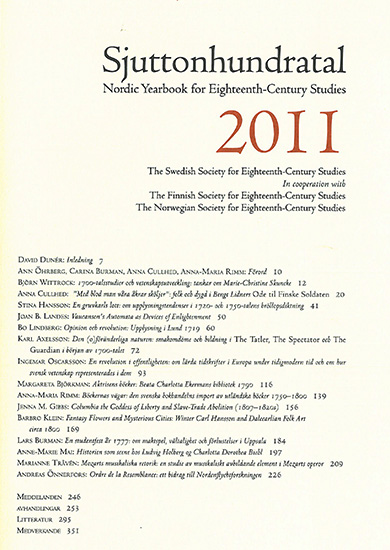Aktrisens böcker: Beata Charlotta Ekermans bibliotek 1790
DOI:
https://doi.org/10.7557/4.2388Keywords:
Beata Charlotta Ekerman, theatre, book historyAbstract
In this article I discuss a collection of books that belonged to Beata Charlotta (Charlotte) Ekerman (1758-1790), an actress at the Royal Theatre in Stockholm. Ekerman became the mistress of Prince Charles, brother of Gustav III. The prince dismissed her for another woman and she was suspected of infanticide and slander against the king. The governor of Stockholm, Carl Sparre, helped her to avoid the Spinning House, but she was exiled and lived in Paris between 1782 and 1786. In 1784 she travelled to Italy, where she had been invited by a Neapolitan duke. Thanks to Ekerman's letters to Sparre it is possible to follow her journey from the papal court in Rome to the royal court at Naples. She spent her last years in Stockholm, now mistress of the Dutch ambassador and accused of espionage. The aim of this article is to study the interrelation between the owner and her books, on the basis of a list of Ekerman's books included in the estate inventory drawn up after her death. A selection of these books is discussed with particular regard to language and genre. The collection, described in the inventory as consisting mainly of theatrical pieces and French novels, turns out to have had a wider range, thus revealing its owner's ambition to transgress the stereotypical image of the eighteenth-century woman.Metrics
PDF views
599
Wikipedia
3
Downloads
Published
2011-10-01
Issue
Section
Peer-reviewed articles









